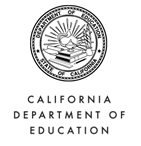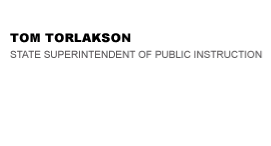Nov. 15, 2016 Every Student Succeeds Act Update


Official Letter
Official Letter
Dear County and District Superintendents and Charter School Administrators:
EVERY STUDENT SUCCEEDS ACT – Update #5
The purpose of this letter is to update you on California’s transition to the Every Student Succeeds Act (ESSA). The new federal law provides states with more flexibility to design accountability and systems of support that will align with current California reforms, such as the Local Control Funding Formula (LCFF) and Local Control and Accountability Plans (LCAPs). In this letter, we will provide information about ESSA regulations, the California ESSA State Plan, and ESSA guidance from the U.S. Department of Education (ED).
ESSA Regulations
ESSA regulations are developed by ED to provide clarity to state educational agencies (SEAs) and local educational agencies (LEAs) for implementing the statute. ED has released and collected public comment on three sets of ESSA regulations:
- Accountability, Data Reporting, and Submission of State Plans
- Assessment and Innovative Assessment Pilots
- Supplement Not Supplant
I have submitted responses to each set of regulations in joint letters with State Board of Education (SBE) President Michael Kirst detailing concerns about the proposed regulations and making recommendations to address those concerns. You may review those letters and the proposed regulations on the California Department of Education (CDE) ESSA Web page at http://www.cde.ca.gov/essa. ED has indicated that it plans to address public comment and finalize the regulations by the end of this year. Once the regulations are finalized, the CDE will inform LEAs of the potential impact on California’s implementation of ESSA programs. We are also tracking the transition to a new federal administration and will notify LEAs if this will have an effect on ESSA implementation.
California ESSA Consolidated State Plan
As part of California’s transition to ESSA, California must submit an ESSA State Plan to ED. The State Plan will describe the State’s implementation of standards, assessment, accountability, and assistance programs and will move us toward California’s goal of having a single, coherent local, state, and federal education system. California has elected to submit a consolidated State Plan, which will address several ESSA programs in a coherent and integrated way.
California will not be able to finalize its State Plan until final regulations are available. However, there are many State Plan components that are not contingent upon regulations. Therefore, the CDE is moving forward with the development of the State Plan to ensure stakeholders have sufficient time and opportunity to inform the State Plan, regardless of the status of regulations.
The CDE intends to steadily develop, and make available for public comment, three successive drafts of the plan over the next several months with new plan sections added to the document as new information becomes available.
The first draft of the ESSA Consolidated State Plan was presented to the SBE at its November meeting and is now available for public comment on the CDE Web site at http://www.cde.ca.gov/re/es/toolkit2.asp. To help facilitate local conversations regarding the plan, the CDE has developed the ESSA Stakeholder Engagement Toolkit available on the CDE Web site at http://www.cde.ca.gov/re/es/toolkit.asp. On this Web site you will find the State Plan Development Timeline, overview materials to familiarize stakeholders with the ESSA and State Plan requirements, and a link to the Phase II Toolkit. The Phase II toolkit includes the first draft sections with accompanying overview videos and a link to the public comment survey for stakeholders to provide input on the draft sections. It also includes facilitator instructions to support local stakeholder engagement activities. The public comment survey for the first draft sections opened on November 10, 2016, and will close on December 2, 2016.
CDE staff will provide a live webinar to preview the first draft sections and the engagement toolkit on Thursday, November 17, at 1 p.m. To register for this event, please visit the Webinar Registration Web page at http://bit.ly/2fQCjq6 (Note: The preceding link is no longer valid). This webinar will be recorded and archived.
I encourage you to participate in and promote this public comment opportunity and help inform the development of California’s ESSA Consolidated State Plan. We will continue to share information about opportunities to participate in the State Plan development process as more information becomes available.
ESSA Non-regulatory Guidance
The ESSA presents SEAs and LEAs with opportunities to better formulate programs and initiatives to address our biggest challenges: narrowing the achievement and opportunity gap for our students and improving outcomes across the educational spectrum. The recent non-regulatory guidance released by ED, listed below, provides support to LEAs and schools regarding implementation of the ESSA, from expanding early childhood education to better address the needs of foster and homeless children, to strategically leveraging federal funding to better serve all students.
Even though the ESSA will not take full effect until 2017–18, it is important to begin planning for implementation now. We encourage you to review the guidance documents below as you consider ESSA implementation at the local level and as you consider providing public comment on California’s ESSA State Plan.
ESSA Title IV, Part A Non-regulatory Guidance – Student Support and Academic Enrichment Program (October 2016) available at http://www2.ed.gov/policy/elsec/leg/essa/essassaegrantguid10212016.pdf
This guidance outlines how Title IV funds can be leveraged to ensure that students receive a high-quality, well-rounded education. The program activities and allowable uses of funds fall under three categories: well-rounded educational opportunities, safe and healthy students, and effective use of technology.
- ESSA Early Learning Non-regulatory Guidance – Expanding Opportunities to Support our Youngest Learners (October 2016) available at http://www2.ed.gov/policy/elsec/leg/essa/essaelguidance10202016.pdf
This guidance explains how to leverage federal funds and programs to expand access to high-quality early learning. It provides real-world examples of how SEAs and LEAs are building successful early education programs. The document addresses the allowable uses of funds under Titles I–III and encourages support for professional development for early childhood educators, alignment between early learning programs and K–12 education systems, and capacity building.
- ESSA Title I, Part A Non-regulatory Guidance – Supporting School Reform by Leveraging Federal Funds in School Wide Programs (September 2016) available at http://www2.ed.gov/policy/elsec/leg/essa/essaswpguidance9192016.pdf
This guidance encourages schools to consider consolidating their federal, state, and local funds to gain flexibility and serve all students by operating schoolwide programs. ED outlines the required components for implementation of schoolwide programs, lists allowable uses of funds, and addresses common misunderstandings regarding Title I funding in a schoolwide program.
- ESSA Title II, Part A Non-regulatory Guidance – Building Systems of Support for Excellent Teaching and Leading (October 2016) available at http://www2.ed.gov/policy/elsec/leg/essa/essatitleiipartaguidance.pdf
This guidance seeks to support SEAs and LEAs to use Title II, Part A funds more strategically and for greater impact. It clarifies and explains new opportunities and highlights allowable uses of funds, which include developing multiple pathways to teaching, induction and mentorship programs, meaningful evaluation and support systems, and strong leadership development for teachers and school leadership. This guidance also outlines ways to address teacher equity, expand access to effective educators, and retain high-quality teachers in
high-needs schools.
- ESSA Title III Programs Non-regulatory Guidance – English Learners and Title 3 (September 2016) available at http://www2.ed.gov/policy/elsec/leg/essa/essatitleiiiguidenglishlearners92016.pdf
This guidance was designed to support SEAs, LEAs, and schools in thinking through how to best address the opportunity and academic achievement gaps that English learners face. It describes ESSA requirements as well as opportunities to leverage supplemental funds to preserve and build effective language instruction education programs; provide support and professional development to teachers and principals to improve instruction; improve parent, family, and community engagement; promote early learning programs; and support enhanced educational opportunities for immigrant children and youth.
- ESSA Evidence Non-regulatory Guidance – Using Evidence to Strengthen Educational Investments (September 2016) available at http://www2.ed.gov/policy/elsec/leg/essa/guidanceuseseinvestment.pdf
No Child Left Behind called for the use of scientifically-based research as the foundation for educational programs and classroom instruction. The ESSA requires that LEAs and schools implement evidence-based measures, particularly in the context of considering interventions that they fund under Titles I–IV. This guidance outlines a framework for evidence-based measures and defines four tiers of evidence: strong evidence, moderate evidence, promising evidence, and practices that demonstrate a rationale.
- Title VII McKinney-Vento Non-regulatory Guidance – Education for Homeless Children and Youths Program (July 2016) available at http://www2.ed.gov/policy/elsec/leg/essa/160240ehcyguidance072716.pdf
This guidance reviews the new and amended requirements under the
McKinney-Vento Act as reauthorized by the ESSA. These changes are focused on identification of homeless children and youth, pre-school aged homeless children, collaboration and coordination with other service providers, professional development and technical assistance, removing enrollment barriers, improving school stability, maintaining privacy of student records, and effectively implementing the dispute resolution process.
- Ensuring Educational Stability for Children in Foster Care Non-regulatory Guidance (June 2016) available at http://www2.ed.gov/policy/elsec/leg/essa/edhhsfostercarenonregulatorguide.pdf
Children and youth in foster care represent one of the most vulnerable student subgroups in the country and the ESSA seeks to address their unique needs. The provisions under the ESSA complement the Fostering Connections Act and require SEAs and LEAs to work with child welfare agencies to ensure educational stability for children in foster care. The guidance also provides “spotlights from the field” for SEAs and LEAs to consider in their planning and implementation.
The CDE is committed to providing schools and districts, stakeholders, and members of the public clear and timely communication regarding our state’s transition to ESSA. You can find more information and resources from the CDE and ED on the CDE ESSA Web page available at http://www.cde.ca.gov/essa. I encourage you to join the CDE ESSA listserv to receive e-mail notifications when new information becomes available. To join, please send a blank e-mail message to join-essa@mlist.cde.ca.gov.
If you have any questions regarding this letter please contact the CDE ESSA Office by phone at 916-319-0843 or by e-mail at ESSA@cde.ca.gov.
Sincerely,
/s/
Tom Torlakson
TT:bm
